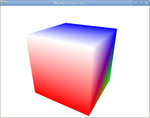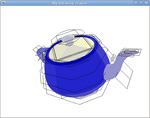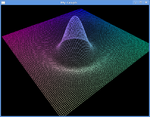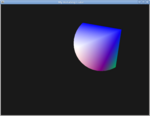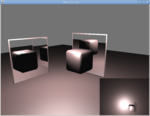A few OpenGL lovers and I are writing a completely new set of OpenGL tutorials
http://en.wikibooks....g#Modern_OpenGL
We start straight with shaders, and replace all legacy 1.x functions with 2.x replacements (we also have a section on upgrade tips). We stick to OpenGL 2.x core profile / OpenGL ES 2, which is now widely available in mobile and desktop platforms.
The tutorials are influenced by NeHe's DIY style (and flying cube!), but start anew and follow a different structure. We also have a section on non-gaming topics such as Scientific visualization.
The tutorials are under the Creative Commons CC-BY-SA, and the code samples are placed in the public domain, and available from the gitorious repo:
https://gitorious.org/wikibooks-opengl
What do you think?
What topics are you interested in?

